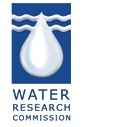Workshop 5 (October 29-30, 2012):
Participating Organizations:
Hydrogeodesy Tutorial (4 hours, day and time to be determined):
|
|

|
IGCP 565 Workshop 5: Water Security for Africa: Bringing Together Research, Monitoring, and ManagingOctober 29-30, 2012 |

 |  |
Towards a Community Workbench for Hydrogeodesy
Hans-Peter Plag
Nevada Bureau of Mines and Geology and Nevada Seismological Laboratory, University of Nevada, Reno, NV, USA; hpplag@unr.edu
The changes in Earth's geometry, gravity field, and rotation (the “three pillars of geodesy”) are observed with a portfolio of geodetic techniques spanning from point-geodetic methods, surface imaging techniques for land, ice and ocean surfaces, and emerging reflectometry, to in situ and space-borne gravity sensors. These techniques capture signals of many physical processes in the Earth system acting on a wide range of spatial and temporal scales. In order to study any of these processes based on geodetic observations, it is often necessary to account for many other processes. In particular, tectonic processes often have similar spatial and temporal scales as signals resulting from mass transport in the fluid envelope of the solid Earth. The rapidly improving accuracy of the geodetic observations increasingly requires an interdisciplinary Earth system approach to the analysis of the observations. This poses a challenge to small research groups, who often do not have the expertise to model all processes that contribute signals to the observations. Although the time-variability of Earth's geometry, gravity field, and rotation are caused by the same Earth system processes, this fundamental link between the different observations is not yet widely explored in geodesy for the analysis and interpretation of the geodetic observations. The Global Geodetic Observing System (GGOS) and other services of the International Association of Geodesy (IAG) have emphasized the importance of integrating the three pillars of Geodesy (Plag and Pearlman, 2009), however, little progress has been made towards this goal. A number of initiatives have improved data sharing, interoperability, and research coordination. However, a community-validated integrated expandable modeling framework supporting specialized studies in a comprehensive model environment is not available.
Already in 2010, the Third Annual Workshop of the IGCP Project 565 “Developing the Global Geodetic Observing System into a Monitoring System of the Global Water Cycle” recommended that a community-based hydrogeodetic modeling framework be developed to facilitate the use of geodetic observations for hydrological applications. We will demonstrate the importance of considering tectonic, hydrological, and atmospheric processes in the analysis of accurate geodetic observations of vertical displacements; identify the challenges of an interdisciplinary approach; and highlight the current obstacles hampering the analysis in a comprehensive system framework. We conclude that a more comprehensive geodesy workbench would serve the broad geodetic community and support the integration of the three pillars of geodesy. The workbench could be developed following the example of other community-based modeling frameworks, such as the Community Surface Dynamics Modeling System (CSDMS), the Global Earthquake Model (GEM), and the emerging community ice model systems (Lipscomb et al., 2009).
References
Lipscomb, W., Bindschadler, R., Bueller, E., Holland, D., Johnson, J., and Price, S., 2009. A community ice sheet model for sea level prediction, EOS, Trans. Am. Geophys. Union, 90(3), 23. Plag, H.-P. and Pearlman, M. (eds.), 2009. Global Geodetic Observing System: Meeting the Requirements of a Global Society on a Changing Planet in 2020, Springer Berlin, 332 pages.
In case of problems, mail to info@igcp565.org.